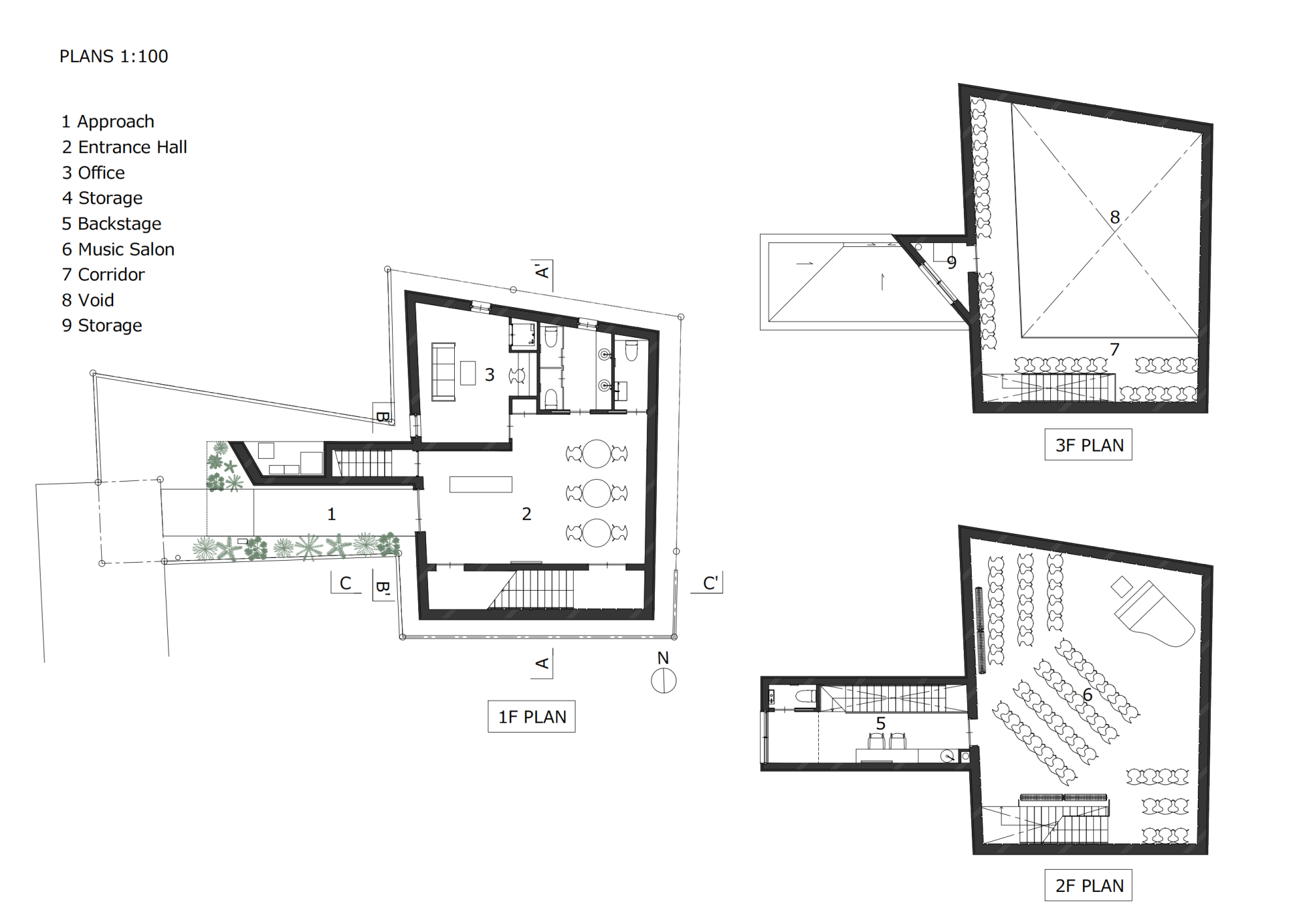The site is located at the end of an arcade that leads from a quiet residential and shopping district in Itabashi-Ku, Tokyo. The surrounding area is very nostalgic, with many houses and small shops, and in springtime, the Shakujii River is filled with people who flock there to admire the pink blooms of the Sakura trees. The architecture’s shape is formed by the shape of the site and merged into the neighborhood, standing quietly in the back alley.
When planning a small membership-based music salon in such an area, it is important to ensure that the sound quality is the same as that in a large-scale music hall, and set a high noise control to protect against noise filtering in from the dense surrounding neighborhood. Natural circulation is created with the irregular flagpole-shaped site, entering the space from the rod-shaped part of the site to flow into the rest of it. An attached room is lifted to integrate various functions, which includes storing sound equipment.
In the main music salon, the proportion of the space is designed based on acoustic simulation, to ensure that sound can evenly reverberate throughout the space within the limited building height. Often, flutter echoes occur when the ceiling, floor, and wall are arranged parallel to one another. To avoid this, numerous acoustic panels are added to ensure that the sound can spread evenly throughout the space. The plan and site are shaped as an irregular quadrilateral, and a square roof is adopted for the double-height section. This achieves a uniform acoustic effect, while also making practical sense for equipment to be displayed under the sloped ceiling.














 loading......
loading......